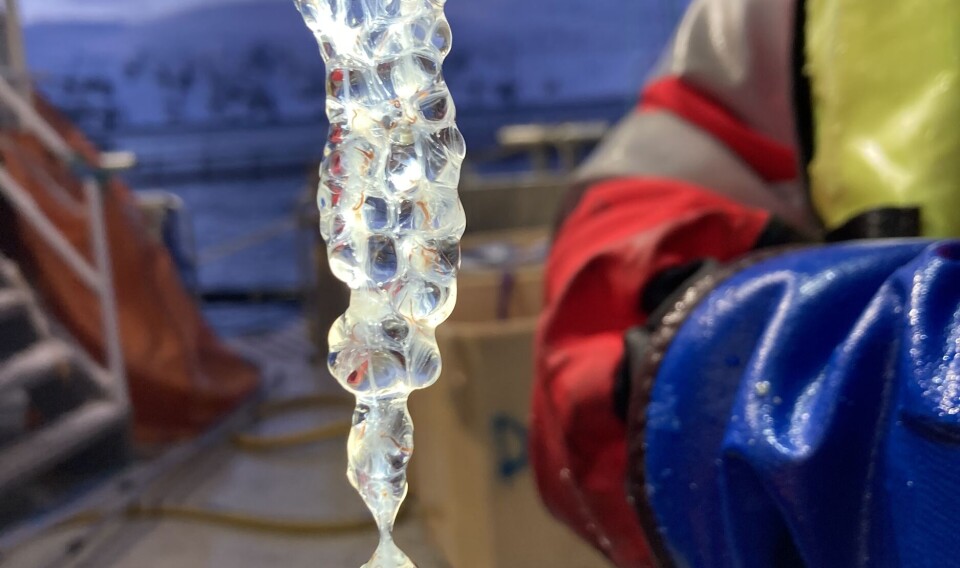
Authority warns Norway fish farmers about deadly jellyfish attacks
It's better to cull fish than let them enter a winter with open wounds, says food safety watchdog
The Norwegian Food Safety Authority (Mattilsynet) has urged the country’s fish farmers to be prepared to take preventative measures to prevent their stock being attacked by string of pearls jellyfish (Apolemia uvaria), known in Norwegian as perlesnormanet, and also known simply as the string jellyfish or barbed wire jellyfish.
Mattilsynet has also called on fish farmers to euthanise injured fish – and even whole pen populations - on their own initiative, instead of waiting for an order from authorities.
In a press release, Mattilsynet said it had received reports of string of pearls jellyfish attacks and a lot of dead fish in recent days.
It said the jellyfish attacks with poison, leaving the fish with burns on the skin and gills. Jellyfish attacks can also make the fish stressed and cause other diseases to worsen.
“The most important responsibility the animal owner has in such a situation is to protect the fish from long-term suffering,” said Bård Skjelstad, director of the supervisory division of aquaculture in Mattilsynet.
“Put preventive measures in place if there are any and ensure good preparedness. Farmers must be quick to implement measures if they experience an attack by pearl jellyfish.”
Euthanisation
Fish with damage from string of pearls jellyfish, with a poor prognosis for wound healing, must be taken out of the cage and euthanised in a responsible manner, said Mattilsynet. If it is not possible to remove fish with extensive damage, the farmer must consider whether all fish in the cage must be slaughtered to end the suffering of the fish. This is independent of whether Mattilsynet has ordered this.
“It is not acceptable to enter a new winter where almost half of the fish that are slaughtered have open wounds, as was the case last year,” said Skjelstad.
In the event of an attack by string of pearls jellyfish, the breeder must ensure:
- regular, systematic monitoring of fish welfare in affected cages to assess the extent and development of damage.
- adequate slaughter capacity.
- that capacity for recording and handling dead and damaged fish must be adapted to the size and number of fish in the facility.

























































